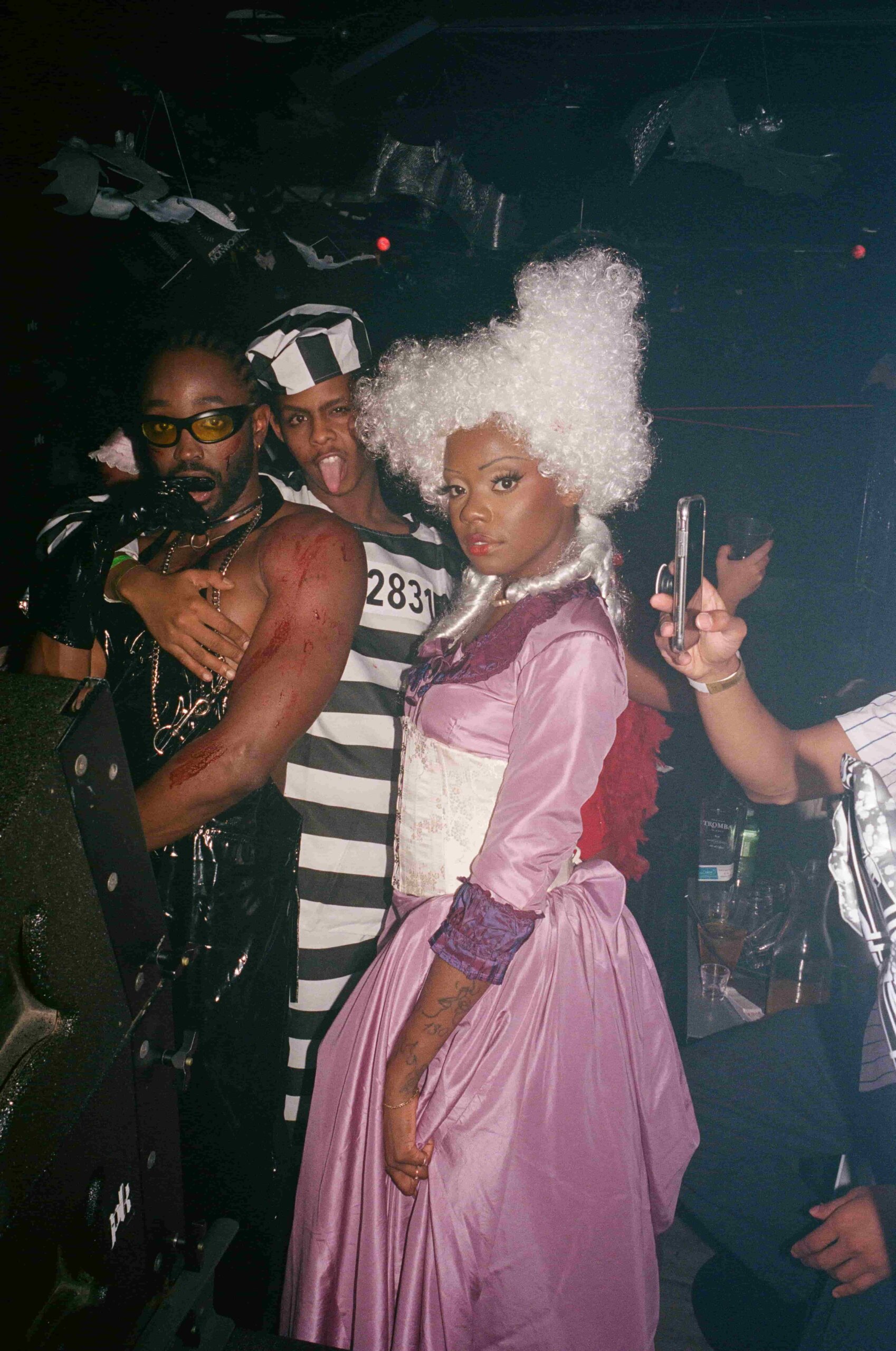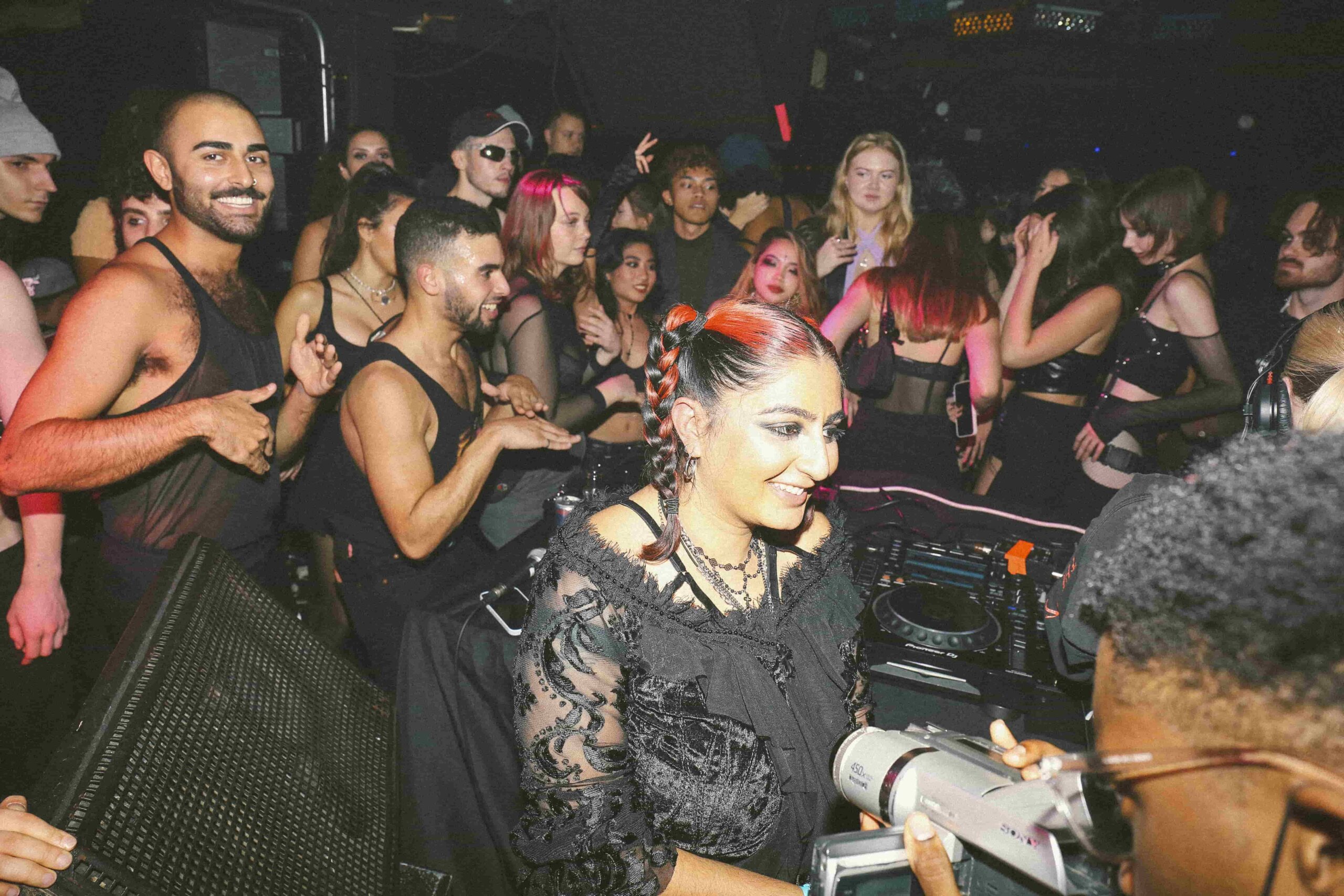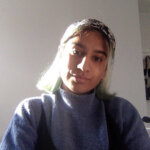When DJ Karim Olen Ash recalls the first Pep Rally rave, he remembers it being a bit of a mess—a mess, he says, that he and the event’s other DJs made work. In a teal-panelled studio space on Toronto’s John Street, Karim and co-founder DJ Chippy Nonstop introduced the city to Pep Rally for the first time. From 11 p.m. on a Saturday until the early hours of a Sunday morning in April 2019, iconic local electronica DJs such as Young Teesh and Babygirl spun alongside Pep Rally’s founders. Three years later, the mess has turned into incredible success: big names at big parties with big impact.
“Part of our appeal is that we value the chaos,” Karim says. “We value the hectic-ness of everyone being on the same level, we are all there to rave.”
Despite COVID-19’s devastating effects on party scenes around the world, BIPOC folks have strived to find community with one another—from Toronto, where the Pep Rally crew resides, to Miami to New York. In fact, Pep Rally has grown despite the pandemic, thanks to its secret outdoor summer events.
Chippy and Karim met in 2016 and formed Pep Rally, a queer- and BIPOC-centred rave and party collective, three years later. Both DJs have a long history in the rave scene: Chippy, who grew up in California, has wanted to produce music since she was young. Prior to moving to Canada in 2016, she produced music with dance trio Major Lazer and ventured into songwriting. (She recently released her track “Accelerate” alongside dj genderfluid.) Karim, on the other hand, was taught how to DJ by his brother and began to show his skills at smaller Toronto clubs like Footwork and Comfort Zone. Soon, Karim would find himself playing at nightclubs during Toronto Fashion Week and throwing parties with stylist Bobby Bowen.
Since its inception, Pep Rally has hosted both indoor and outdoor events, and showcased the work of DJs such as Bambii—a popular Toronto-based artist who infuses dancehall, reggaeton and electronic into their tracks—and most recently Austin-based DJ Sara Landry, who is infamous for their KLUBHAUS warehouse/livestream event series. But Pep Rally is far more than just a party; for its creators, it’s about addressing and tackling the erasure of BIPOC and queer artists.
“It’s a new energy, a new excitement, definitely a fresh take on playing a range of electronic sound.”
“There is a lot of talent [in Toronto], especially with dance music, that is not acknowledged on a global scale,” Chippy says. “We wanted to produce events for queer people on the same scale that straight techno bros have. We want and we deserve to be on those same stages.”
“This is us seeking refuge, this is us having a release, this is us finding community,” Karim adds.
Toronto’s rave scene has evolved since its heyday, with BIPOC- and queer-led spaces such as Empire Dancebar, Go-Go and Slack’s being replaced by condos. Now, the city is entering a revival of rave and dance culture, accompanied primarily by 140 BPM and electronic music—and collectives like Pep Rally are at the forefront. Toronto is beginning to reclaim its status as another epicentre for queer nightlife, among the likes of Miami and New York.
“It’s a new energy, a new excitement, definitely a fresh take on playing a range of electronic sound,” says Denise Benson, a Toronto DJ and writer. “You don’t get this kind of energy every year, or even every five years.”
Queer-electronic culture has been part of Benson’s life since before she moved to Toronto in 1986: it was a staple during her adolescent years in Grafton, Ontario, about two hours outside of Toronto. Pulling from her experiences DJing, hosting events and forming queer women-led event Cherry Bomb, Benson created Then and Now, a blog-turned-book that compiles four decades of the city’s nightlife.
“If your parties take off in popularity and you’re creating a space for a queer crowd, the onus is on us to try and make the space safe,” Benson says. “The safest and most respectful clubs are the clubs where the owners sit down with you and ask you questions about your crowd, and how they can make this a better night for your crowd.”
Historically, the city’s queer community found a safe haven in its nightlife. In the ’90s, clubs such as Joy and Boots were sanctuaries for Toronto’s queers. Even so, the BIPOC queer community consistently had to create their own spaces. The South Asian queer collective Khush and the Caribbean queer collective Pelau MasQUEERade were just two of the community groups creating inclusive party spaces in the 1990s. Party organizers like DJ Blackcat spun underground house and reggae, while DJ Zahra spun South Asian-infused house at queer spaces like Red Spot, Crews and Tangos (formerly Ghetto Fag) and 5ive, in addition to underground raves people found through word of mouth.

Credit: Boris Halas
For Karim and Chippy, maintaining that type of inclusive scene is their priority. “Money is not why we’re doing it, we’re doing it for the community,” Karim says. “We just do our best to keep that at the forefront, and at the end of the day we can’t be perfect.”
Organization and safety translates across the border. While the Toronto scene begins to regroup, New York organizers are making similar moves. When planning events, Ava Antpuke and Deathrayz have always put the safety of Black and brown trans artists and ravers at the forefront. That, Deathrayz says, includes “getting security that’s educated around our community, having free water or spaces where you can go outdoors and accessibility for anyone who has a disability.
“This is a space where you can just be whoever you want,” Deathrayz adds.
Antpuke and Deathrayz met at a 2015 gig in Miami in 2015, when they were 17 years old, and bonded over their shared love for the scene. Years later, they held their first event in the city under the name Club Carry.
Growing up in Miami, Ava remembers the scene as being heavily white and tech house-based; she couldn’t thrive there. For both her and Deathrayz, New York City was the place to showcase their talent—and others’—on a larger, more inclusive stage. So, in July 2019, Club Carry made its first appearance in a Brooklyn studio.
Both DJs found themselves transitioning together, coming into their womanhood and finding themselves with each other by their side, Ava says.
“New York raves like to be very hard,” Deathrayz says. (Trekking 40 minutes in an Uber to a random pit in the forest is a normal night in the New York scene.) “You just hear the ‘boom, boom, boom,’ and it’s like ‘Oh! Finally we’re here,’” she says. “Sometimes it’ll go till 7 a.m., and then people still want to keep it going, the afterparty can go on till 1 p.m.”
Much like Pep Rally’s founders, giving back to the community is paramount to Club Carry organizers. Ravers can go to an event that is benefiting others and have an impact, whether through fundraising or hiring trans BIPOC DJs.
“We do trans safety fundraisers, and we [noticed] people say, ‘I like this party because it’s going to the girls,’” Ava says. “When you bring the community to raves, the event is different, it’s beautiful and it’s very special.”
Community and connection to other queer and trans folks can be difficult to maintain—especially for DJ Mossy Mugler, who grew up in Qatar. Growing up, Mossy didn’t have a strong community or support system where they could discuss queerness or trans identity. While Mossy now has the support of their younger sister Ciggaria, who is also trans, the memory of back home comes with a sense of misery.
“It doesn’t mean that it’s a miserable place, it’s very different for queer and trans people because I wasn’t able to express myself freely without heavy repercussions,” they say. “I don’t come from a supportive family… and it seemed like they were only religious when it came to my trans or queer identity.”
“I thought to myself, ‘I want to work in this space, I want to work for this community.’”
Eventually, Mossy found their community when they moved to Montreal in 2018. The city pushed them to seek opportunities for self-expression. “I was inspired by the amount of people who were dedicated to music and nightlife and expressing themselves freely,” Mossy says. “I thought to myself, ‘I want to work in this space, I want to work for this community.’” Soon, Mossy started DJing, booking parties and frequently visiting New York City.
Over the next three years, they brought to life their own party collective, Hauterageous Worldwide, playing alongside Montreal-based DJs Sisi Superstar and MimiVirus. Their collective would soon get out of town gigs, spinning alongside Club Carry founders in New York.
With the help of Chippy and Karim, Mossy’s collective eventually collaborated with Pep Rally in Toronto for a Halloween event at Coda, where Mossy got to spin. “I really love Toronto for how extra it is,” they said. “I’m really extroverted and Toronto people match that energy.”
At the end of the day, much like Karim, the electronic scene is Mossy’s safe space, where they can be their true self. And like Karim, Mossy sees rave culture, the scene and its community as their own sanctuary.
“This is a church, and we worship through music,” they say. “That’s our prayer and just like people go to church on Sunday, we go to the club on Saturday. We all have that spiritual connection to it.”
Correction: March 7, 2022 9:28 amMarch 4, 2022 11:58 am
DJ Karim Olen Ash’s name was misspelled and Deathrayz’ name was noted wrong in earlier versions of this story.


 Why you can trust Xtra
Why you can trust Xtra


